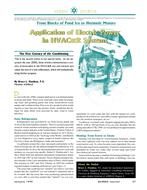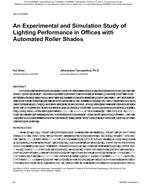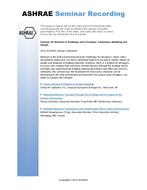While a heat pump is a desirable heating unit due to a seasonal coefficient of performance (COP) in excess of 1.5 in moderate climates, its performance decreases in the coldest part of the winter when the heating load is greatest. Both the COP and capacity of the machine decrease as the outdoor temperature decreases. Auxiliary resistance heaters must then be used to provide the deficit capacity. The overall COP of the unit then approaches 1.0.
The purpose of this study was to perform an initial investigation of the use of ground source energy available in the crawl space of a single-family dwelling. Two modified installations of a conventional air-to-air heat pump were investigated. The modified installations that were investigated were the single-pass and recirculating crawl space air-to-air heat pumps. The single-pass crawl space heat pump pulls ambient air through the crawl space to the outdoor heat exchanger where it is exhausted back to ambient air. The proposed recirculating crawl space heat pump installation makes use of a sealed crawl space and appropriate ducting to draw the air from one part of the crawl space and exhaust it to another part for a continuous recirculation of the crawl space air.
A program, CRAWLTEMP, was written to perform a heat balance on the crawl space to determine the dry bulb temperature of the crawl space, calculate the heat fluxes and mass transfer across the boundaries of the crawl space, and predict the net savings of the crawl space heat pump.
Product Details
- Published:
- 1981
- Number of Pages:
- 13
- File Size:
- 1 file , 1.3 MB
- Product Code(s):
- D-CI-2661
- Note:
- This product is unavailable in Russia, Belarus


